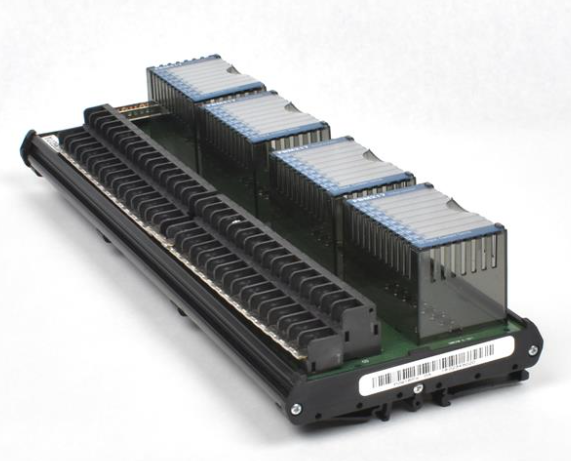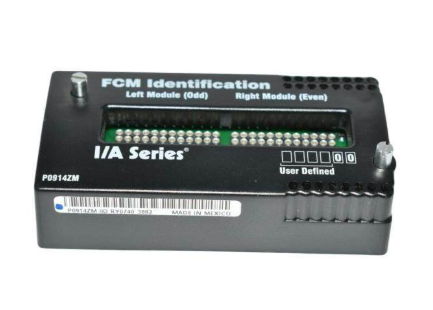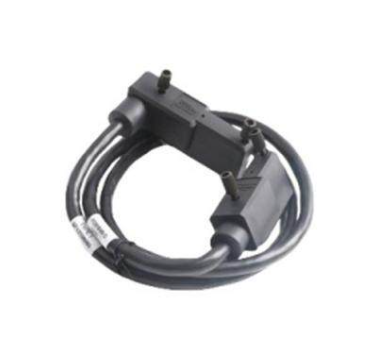What are the properties of photons and electrons? What the hell do they have to do with each other?
"Photons and electrons are the most basic microscopic particles, and they are indivisible."
If we do not regard atomic nuclei and atoms, which are basically morphological matter, as particle matter, then particle matter can be divided into large and small, and can be divided into: Proton and subclass particle matter, ray particle matter smaller than proton neutron, electron particle matter smaller than ray particle, light particle matter smaller than electron, heat particle matter smaller than light particle, the final particle matter. Therefore, particle matter is indivisible only when it is divided into particle matter at the level of hot particles. Photons and electrons are also separable particles of matter. Electrons are particles that can be decomposed into photons and thermal particles, and photons are particles that can be decomposed into thermal particles. Therefore, it should be wrong to say that "photons and electrons are the most basic microscopic particles, and they are inseparable".

- About "Photons are carriers of energy, or light is actually energy"
Photon as a particle matter, it is matter, it is made up of thermal particles such as particle matter. Since a photon is matter, it is not energy. There is energy stored in the photon, but the energy stored in the photon is only released when the photon is broken down into more and smaller light particles and completely and completely broken down into heat particles, and used to decompose more and smaller photons and heat particles. The photon, as the original light, is the product of the incomplete decomposition of electrons, protons and neutrons in the decomposition process. The 300,000 kinetic energy of the photon per second is not the energy carried by the photon, but the energy released by the electrons, protons and neutrons in the incomplete decomposition process, and the energy released by the electrons, protons and neutrons in the decomposition process promotes the photon to move at 300,000 kilometers per second. So it is wrong to say that light is really energy.
"Although a photon has the properties of a particle, it is not strictly speaking a concrete particle like an electron."
A photon is a particle. Unlike electrons, protons and neutrons, photons are inherent particles squeezed into independent hot particles by centripetal pressure, expansion pressure and torsion in the black hole, but the particles produced by the inherent particles of electrons, protons and neutrons in the decomposition process, and are particles smaller than electrons. If the particle matter of photon does not collide with the matter larger than it in the universe, it can exist indefinitely in the form of particle matter.
- On "The general conclusion of scientists at present is that photons have no mass"
Indeed, the current general conclusion of scientists is that photons have no mass. But since photons are the products of the decomposition of electrons, protons, and neutrons, and since electrons, protons, and neutrons are matter with mass, the products of their decomposition - photons - are also matter, and also matter with mass. No matter is massless. The mass of all matter is determined by the number and density of hot particles contained in the matter. And the photon is also composed of hot particles, is containing hot particles, of course, by the mass.
- About "The speed of light is the speed of gravitational waves"
Whether there are gravitational waves or not is a question. What exactly is gravity, what is the matter that allows gravity to exist, what is the mechanism by which gravity works, are still some of the unanswered questions, so how do you explain the speed of gravitational waves?

"The electron is an indivisible elementary particle, at least for the time being."
An electron is a particle matter smaller than a proton or neutron, larger than a photon, and larger than a thermal particle. If electrons are indivisible particles, then we have to ask not only, is the current flowing through the cable composed of electrons? After the current has done work, if it is not decomposed, then the current and electrons should still continue to exist in the form of current and electrons, and should be able to do work indefinitely. The fact is that each kilowatt of current and the electrons that make up this kilowatt of current disappear after the work is done, and no work can be done, but heat is produced. So where do the electrons in this kilowatt current go? The answer can only be that the electron is broken down, broken down into the independent hot particles that thermally represent its existence. The decomposition of electrons into independent hot particles is just one result of the decomposition of electrons. In the process of electron decomposition, there is also the product of incomplete decomposition - photon. The light emitted by the electric lamp is the incomplete decomposition produced after the electric lamp is decomposed by the electrons in the current. Therefore, electrons can always be disintegrated, whether they are electrons in an electric current or electrons in an atom.
- About "The spin directions of the two electrons must be opposite at the same time"
The fact that electrons have different spin directions is suspicious, especially for electrons orbiting the nucleus. Because it has to do with the formation of electrons. How did so many electrons form in the universe? There should be three ways. In one way, two photons with a mass equal to that of an electron each intersect at a relative speed of 300,000 kilometers per second at a certain Angle to synthesize an electron. The electrons produced in this way should be few and far between, and would only be produced in an environment like Earth with plants and clouds. So, for the vast majority of electrons that exist in the universe, they must have been created in the other two ways. One way is that the electrons are formed in the black hole by the centripetal pressure and expansion pressure of the black hole. (In the black hole, the independent hot particles are also squeezed into the two elementary particles, protons and neutrons.) Another way electrons are produced is when protons and neutrons break apart. Therefore, the vast majority of electrons in the universe should be formed in black holes. That is to say, most of the conditions for the formation of electrons are the same, so its properties should also be consistent, or the same. The spin of an electron is one of its properties. Therefore, the spin of the electron should also appear to be consistent and identical in direction, and should not be positive or negative.

"If the outermost electron gains enough energy, the electron will be freed from its nucleus and become a free electron."
It is an objective fact that the extranuclear electrons can get rid of the bondage of the nucleus and become free electrons under certain conditions. Triboelectrification is the expression of electrons escaping the bonds of atomic nuclei and becoming free electrons. But what are the conditions under which an extranuclear electron can become a free electron? It should be the expansion effect caused by the large and rapid increase of hot particles, rather than the absorbed energy of electrons. Let us take the example of triboelectricity to show how the expansion effect of a large and rapid increase in hot particles causes the extranuclear electrons to become free. To rub something is to exert a force of friction on it. This friction will destroy the electrons in the surface atoms of the object and even the protons and neutrons in the nucleus. The result of destruction is that some electrons, protons, and neutrons in the surface atoms of the object are decomposed and reduced to independent hot particles (the heat generated by friction is the manifestation of the existence of independent hot particles). The volume of electrons, protons, neutrons, which were originally dense, will expand suddenly after being decomposed into independent hot particles, and this sudden volume is a force. It is this sudden expansion force that pushes out some of the other extraneous electrons in the object being rubbed and becomes free electrons. So, instead of "the outermost electron gaining enough energy" to become a free electron, the volume of the electron, proton, and neutron after being broken down into independent hot particles suddenly expands and pushes the extranuclear electron out of the nucleus and becomes a free electron.
"The photoelectric effect does not mean that a photon can be converted into an electron, but that when an electron absorbs a photon of a certain energy, it becomes a free electron and can generate an electric current."

The photoelectric effect is definitely the corresponding conversion of photons into electrons. Of course, the conversion of particle matter such as photons into particle matter such as electrons needs to meet certain conditions. For example, it must be two particles of light with a mass equal to that of an electron to synthesize an electron. For example, two light particles whose mass is equal to that of an electron each intersect with the kinetic energy of 300,000 kilometers per second and at a certain Angle to form an electron. Biosemiconductors in plants (i.e., chloroplasts) and man-made semiconductors use this mechanism to synthesize electrons from sunlight. We can also prove in reverse perspective that "the photoelectric effect does not mean that photons can be converted into electrons, but that when electrons absorb photons of a certain energy, they become free electrons, and they can generate current" is wrong. For example, if we put a solar panel and an iron plate in the same place to receive sunlight, then the electrons in them at the same time "absorb photons of a certain energy", why the temperature of the iron plate will rise sharply but not produce current, while the solar panel will produce current? This is because the iron plate does not have the conditions to convert sunlight into electrons, while the solar panel has the conditions to convert sunlight into electrons. Therefore, after the solar energy hits the iron plate with a strong kinetic energy of 300,000 kilometers per second (that is, the so-called photon that absorbs a certain energy), it is completely and completely decomposed and reduced to an independent state of hot particles. Some of the sunlight enters the solar panel at a powerful kinetic energy of 300,000 kilometers per second, and is converted into electrons by artificial semiconductors and forms an electric current. Therefore, photons can be converted into electrons and form an electric current. Instead, electrons become free electrons when they absorb photons of a certain energy.
"Electrons can indeed 'become' photons, in two ways. The first is decay, but the process of electron decay is extremely long, scientists have calculated that the electron signature can reach 6.6×10²⁸ years. Second, annihilation occurs when it collides with positrons."
Electrons can become photons, so electrons and photons are not particles of the same volume and mass. If they're the same, why divide them into electrons and photons? If electrons and photons are not the same kind of particles, then there is a difference in volume and mass size. If the electron is a particle larger than the photon, that means that the decomposition of the electron can be decomposed into its own smaller photons. If this is the case, it contradicts the previous statement that the electron is an indivisible elementary particle. Thus, an electron is a particle larger in volume and mass than a photon, and is a particle that can be decomposed into at least two photons by decomposition. If the decomposition of the electron is regarded as the decay of the electron, then the "decay-decomposition" of the electron is not 6.6×10²⁸ years calculated by scientists, but is completed in an instant. Looking at how the electric particles in the current are instantly decomposed into light and heat (the presence of independent hot particles) after colliding with the tungsten wire in the bulb, and how the electrons in the current are instantly decomposed into heat (the presence of independent hot particles) in the motor, we can see how unreasonable it is that the electron decay takes 6.6×10² years. Moreover, the annihilation of electrons does not come to nothing. The annihilation of electrons is the decomposition of electrons, is the decomposition of electrons to constitute the independent state of the hot particles, is the independent state of the hot particles to reflect the existence of the annihilation of electrons, is the independent state of the hot particles to reflect the law of material immortality.

Science popularization is a very good social affairs and social work. However, if science popularization is only the unchanging existing scientific knowledge, the unmodified and unevolved existing scientific knowledge, or even the self-contradictory and wrong existing scientific knowledge, it can only solidify the status of existing scientific knowledge and strengthen the consciousness of existing scientific knowledge in people's minds. Even if it solidifies the status of wrong scientific knowledge and strengthens the consciousness of wrong scientific knowledge in people's minds, it will constitute a kind of resistance to correct correction and reasonable progress of scientific knowledge, will constitute a rejection of newly created reasonable and correct scientific thoughts and views, and will play a kind of counter-effect to hinder scientific progress.
Therefore, when people do the beautiful business of popular science, they should express the traditional existing knowledge and the scientific thoughts and opinions that are different from the traditional existing knowledge at the same time, so that people who receive popular science publicity and popular science education can think, compare, judge and choose by themselves. Doing science popularization in this way should be conducive to people's independent thinking, should be conducive to the promotion of correct and reasonable scientific thoughts and scientific viewpoints, and should be conducive to promoting scientific progress.
- EMERSON
- Honeywell
- CTI
- Rolls-Royce
- General Electric
- Woodward
- Yaskawa
- xYCOM
- Motorola
- Siemens
- Rockwell
- ABB
- B&R
- HIMA
- Construction site
- electricity
- Automobile market
- PLC
- DCS
- Motor drivers
- VSD
- Implications
- cement
- CO2
- CEM
- methane
- Artificial intelligence
- Titanic
- Solar energy
- Hydrogen fuel cell
- Hydrogen and fuel cells
- Hydrogen and oxygen fuel cells
- tyre
- Chemical fiber
- dynamo
- corpuscle
- Pulp and paper
- printing
- fossil
- FANUC
- Food and beverage
- Life science
- Sewage treatment
- Personal care
- electricity
- boats
- infrastructure
- Automobile industry
- metallurgy
- Nuclear power generation
- Geothermal power generation
- Water and wastewater
- Infrastructure construction
- Mine hazard
- steel
- papermaking
- Natural gas industry
- Infrastructure construction
- Power and energy
- Rubber and plastic
- Renewable energy
- pharmacy
- mining
- Plastic industry
- Schneider
- Kongsberg
- NI
- Wind energy
- International petroleum
- International new energy network
- gas
- WATLOW
- ProSoft
- SEW
- wind
- ADVANCED
- Reliance
- YOKOGAWA
- TRICONEX
- FOXBORO
- METSO
- MAN
- Advantest
- ADVANCED
- ALSTOM
- Control Wave
- AB
- AMAT
- STUDER
- KONGSBERG
- MOTOROLA
- DANAHER MOTION
- Bently
- Galil
- EATON
- MOLEX
- Triconex
- DEIF
- B&W
- ZYGO
- Aerotech
- DANFOSS
- KOLLMORGEN
- Beijer
- Endress+Hauser
- MOOG
- KB
- Moxa
- Rexroth
- YAMAHA
- Johnson
- Westinghouse
- WAGO
- TOSHIBA
- TEKTRONIX


Email:wang@kongjiangauto.com



































































































































